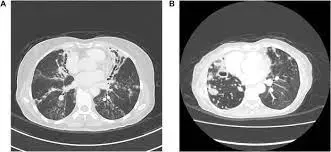- Home
- Medical news & Guidelines
- Anesthesiology
- Cardiology and CTVS
- Critical Care
- Dentistry
- Dermatology
- Diabetes and Endocrinology
- ENT
- Gastroenterology
- Medicine
- Nephrology
- Neurology
- Obstretics-Gynaecology
- Oncology
- Ophthalmology
- Orthopaedics
- Pediatrics-Neonatology
- Psychiatry
- Pulmonology
- Radiology
- Surgery
- Urology
- Laboratory Medicine
- Diet
- Nursing
- Paramedical
- Physiotherapy
- Health news
- Fact Check
- Bone Health Fact Check
- Brain Health Fact Check
- Cancer Related Fact Check
- Child Care Fact Check
- Dental and oral health fact check
- Diabetes and metabolic health fact check
- Diet and Nutrition Fact Check
- Eye and ENT Care Fact Check
- Fitness fact check
- Gut health fact check
- Heart health fact check
- Kidney health fact check
- Medical education fact check
- Men's health fact check
- Respiratory fact check
- Skin and hair care fact check
- Vaccine and Immunization fact check
- Women's health fact check
- AYUSH
- State News
- Andaman and Nicobar Islands
- Andhra Pradesh
- Arunachal Pradesh
- Assam
- Bihar
- Chandigarh
- Chattisgarh
- Dadra and Nagar Haveli
- Daman and Diu
- Delhi
- Goa
- Gujarat
- Haryana
- Himachal Pradesh
- Jammu & Kashmir
- Jharkhand
- Karnataka
- Kerala
- Ladakh
- Lakshadweep
- Madhya Pradesh
- Maharashtra
- Manipur
- Meghalaya
- Mizoram
- Nagaland
- Odisha
- Puducherry
- Punjab
- Rajasthan
- Sikkim
- Tamil Nadu
- Telangana
- Tripura
- Uttar Pradesh
- Uttrakhand
- West Bengal
- Medical Education
- Industry
Feno levels may predict complications among patients with nontuberculous mycobacterial pulmonary disease: Study

Feno levels may predict complications among patients with nontuberculous mycobacterial pulmonary disease suggests a study published in the BMC Pulmonary Medicine.
Measurement of exhaled nitric oxide (FeNO) is a potentially useful diagnostic test for asthma. However, no study has explored the relationship between FeNO and respiratory symptoms of nontuberculous mycobacterial pulmonary disease (NTM-PD) complicated with asthma. The objective of this study was to assess the utility of measuring FeNO levels in patients with nontuberculous mycobacterial pulmonary disease complicated by asthma. In this single-center retrospective cohort study, 140 nontuberculous mycobacterial pulmonary disease patients with FeNO measured were enrolled. They selected nontuberculous mycobacteria-PD patients who complicated with asthma as the nontuberculous mycobacteria+BA group, defined using the following criteria: nontuberculous mycobacteria patients with symptoms consistent with asthma, and nontuberculous mycobacteria patients with symptomatic improvement after diagnostic therapy with ICS ± a long-acting beta 2-agonist (LABA). We then calculated a diagnostic cutoff point to distinguish between the NTM+BA groups and the nontuberculous mycobacteria groups (all others). High-resolution computed tomography (HRCT) images were evaluated using the CT scoring system and their association with FeNO was examined.
Results: A total of 89 patients were included in the study. Compared with the nontuberculous mycobacteria group, the nontuberculous mycobacteria+BA group had higher rates of allergic disease (51.6% vs. 22.4%; p=0.0085) and higher FeNO values (median, 23 [interquartile range {IQR}, 15.0-43.0] ppb vs. median, 17 [IQR, 11.8-23.0] ppb; p=0.015). With diagnostic asthma care using mainly ICS/LABA with reference to the FeNO, most patients (91.0%, 20/22) in the nontuberculous mycobacteria-preceding subgroup in the nontuberculous mycobacteria+BA group demonstrated a prompt improvement of their symptoms and AFB culture findings did not worsen (Culture positive rate (%): Pre-treatment: 59.1% vs. Post-treatment: 40.9%, p=0.3660) at 6 months after starting diagnostic therapy. The optimal diagnostic cutoff point of FeNO to distinguish between the two groups was calculated as 21.5 ppb by the ROC curve (sensitivity 75%, specificity 71.93%, p<0.0001; area under the curve: 0.7989). No significant correlation was observed between FeNO and the severity of CT images in the patients. A certain number of patients with nontuberculous mycobacteria-PD showed exacerbated respiratory symptoms due to asthmatic complications. Elevated FeNO levels suggest asthma complications, even in patients with nontuberculous mycobacteria.
Reference:
Miki, M., Miki, K., Akiba, E. et al. The diagnostic impact of fractional exhaled nitric oxide for asthmatic cough in nontuberculous mycobacterial pulmonary disease. BMC Pulm Med 24, 210 (2024). https://doi.org/10.1186/s12890-024-03028-3
Dr. Shravani Dali has completed her BDS from Pravara institute of medical sciences, loni. Following which she extensively worked in the healthcare sector for 2+ years. She has been actively involved in writing blogs in field of health and wellness. Currently she is pursuing her Masters of public health-health administration from Tata institute of social sciences. She can be contacted at editorial@medicaldialogues.in.
Dr Kamal Kant Kohli-MBBS, DTCD- a chest specialist with more than 30 years of practice and a flair for writing clinical articles, Dr Kamal Kant Kohli joined Medical Dialogues as a Chief Editor of Medical News. Besides writing articles, as an editor, he proofreads and verifies all the medical content published on Medical Dialogues including those coming from journals, studies,medical conferences,guidelines etc. Email: drkohli@medicaldialogues.in. Contact no. 011-43720751


